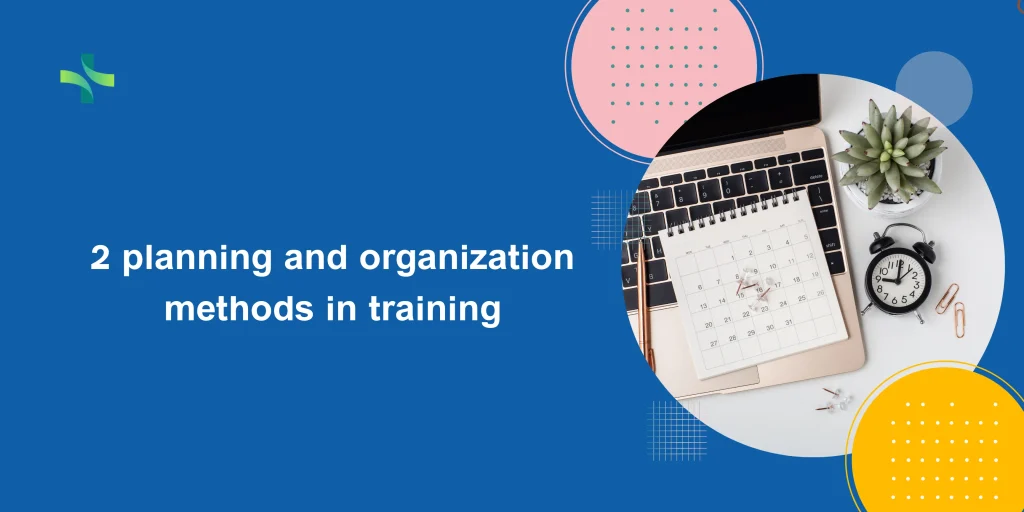One of the methods of the planning and organization process is to clarify the working environment, where everyone should know what to do, The tasks and responsibilities assigned to each person are right to be clear, The overall organizational division must be clear, The quality and limits of the authorities must be specific.
One of the advantages of the planning and organization process is also the coordination of the working environment, Chaos must be at its lowest level and obstacles must be removed, And the links between different work units must evolve, Guidance on interaction between staff should also be known.
Or not: Management and office planning methods for training:
Administrative and office planning of training refers to everything related to the training course and its organization, Except for the training itself, Which participants cannot see and cannot be included in the training content.
- Learn about the importance of administrative and office planning in the training process and its application.
- Learn how to organize training (before, during and after).
- Learn about the common seating conditions in training.
The importance of administrative and office planning methods for training:
Administrative and office planning is important for all participants in training as follows:
For the trainer:
- Help prepare and maintain a plan for each training session.
- Coordination between trainers on dates and meetings.
- Processing and arranging literature.
- Equipping tools and training aids.
- The name and place of the trainer were distributed to the trainees.
- Contact learners and send invitations to attend and lesson plans.
- Find out when the trainees will arrive.
- Address any problems the trainee faces during his stay.
- Arrange any field or recreational trips.
- Register a list of participants’ names and addresses.
The organizer has training methods:
- Save the participant’s name and address in a file to be placed in that party’s mailing list.
- Save the full training file for reference when needed.
- Documenting the course.
Training funding methods:
- Maintain communication between the organization that conducts the training and the organization that funds it.
- Get quotes to host courses from multiple locations so that funding agencies can choose the right location.
- Daily attributes are recorded and a copy is sent to the funder with the budget.
- Send course files and reports to sponsors.
Identify administrative and office requirements for training:
Each stage has different administrative and office needs, so that the coordinator of the training program remembers all these needs and arranges their implementation, It is best to divide the training stages as follows:
- Training needs before training begins
- Setup period with the funder
- Send the project proposal
- Find out who’s in charge
- Receipt of the implementation and funding contract for the course.
- Coordination with the funder on the location and date of implementation.
Training needs during training:
- Reception and comfort of trainees from outside the training area.
- Review the organization of the room according to the meeting plan.
- The documents for each chapter in the room are arranged according to the meeting plan.
- Provide the required training methods and aids.
- Keep a copy of each published material distributed in the form of an integrated training file.
- Receive, print and copy summaries and evaluations for each training day for distribution to participants.
- Plan any field or recreational visits.
- Record daily expenses.
- Prepare for the next training day.
- Processing and printing certificates.
Post-training training needs:
- Distribution of the names and addresses of trainees and trainers to increase their understanding, coordination and cooperation in the future.
- Transfer of training methods to training.
- Pay for training.
Secondly: Training management methods
The form in which training begins determines the pattern that training will follow. During the first training, People who don’t know each other formed initial impressions, Whether negative or positive, They are sensitive to topics such as location, trainer, training materials and the expected training process. Insufficient attention has been paid to this stage, and training can lead to increased tension, anxiety and misunderstanding, This may encourage early withdrawal from the cycle.
At the beginning of training:
Participants begin a training course with a number of questions, Some are practical requirements on how to organize and manage training (the duration of each session, Breaks, Timeline of activities, The nature of the hearing). Other considerations range from the coach, concern about not knowing others, Loneliness, Loss of self-confidence. And much more.
Practical and procedural problems can be dealt with directly, But knowing the reasons for students’ interest and dealing with them properly requires a lot of confidence and consultation from the coach. However, The beginning of training is more than just presenting the plan and starting.
Useful tips:
- Participants knew each other.
- Introducing the training session (a brief overview of training objectives and methods).
- Explain administrative procedures (showing the general schedule, schedule of meetings, breaks, equipment, halls, different places, bathrooms and prayer places).
- Participants should feel comfortable at the opening ceremony.
Connect with us via
Facebook Instagram Twitter
Free form for training bag
A free form of a training bag provided by your bag for review
Download the form now










